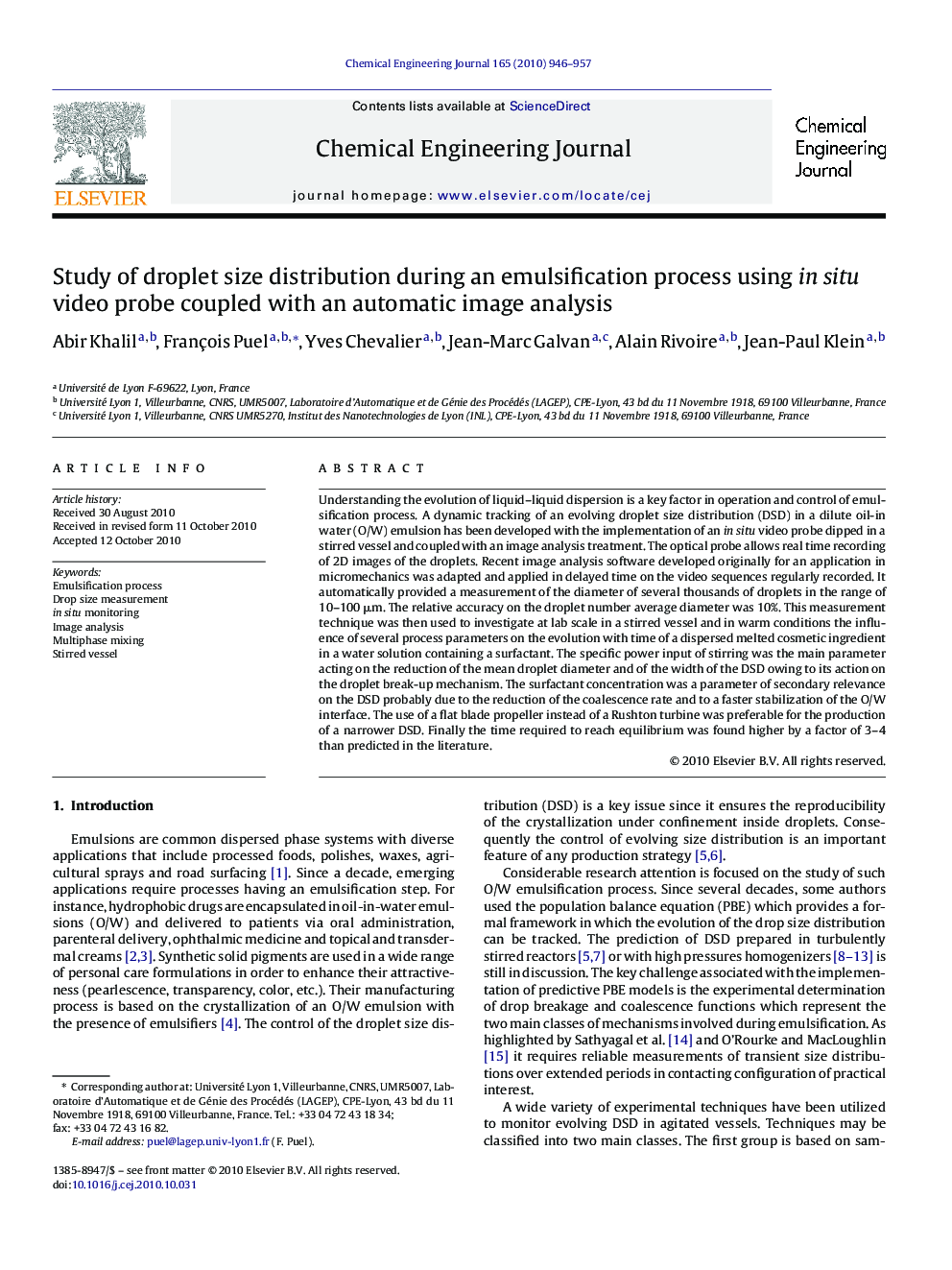| Article ID | Journal | Published Year | Pages | File Type |
|---|---|---|---|---|
| 151269 | Chemical Engineering Journal | 2010 | 12 Pages |
Understanding the evolution of liquid–liquid dispersion is a key factor in operation and control of emulsification process. A dynamic tracking of an evolving droplet size distribution (DSD) in a dilute oil-in water (O/W) emulsion has been developed with the implementation of an in situ video probe dipped in a stirred vessel and coupled with an image analysis treatment. The optical probe allows real time recording of 2D images of the droplets. Recent image analysis software developed originally for an application in micromechanics was adapted and applied in delayed time on the video sequences regularly recorded. It automatically provided a measurement of the diameter of several thousands of droplets in the range of 10–100 μm. The relative accuracy on the droplet number average diameter was 10%. This measurement technique was then used to investigate at lab scale in a stirred vessel and in warm conditions the influence of several process parameters on the evolution with time of a dispersed melted cosmetic ingredient in a water solution containing a surfactant. The specific power input of stirring was the main parameter acting on the reduction of the mean droplet diameter and of the width of the DSD owing to its action on the droplet break-up mechanism. The surfactant concentration was a parameter of secondary relevance on the DSD probably due to the reduction of the coalescence rate and to a faster stabilization of the O/W interface. The use of a flat blade propeller instead of a Rushton turbine was preferable for the production of a narrower DSD. Finally the time required to reach equilibrium was found higher by a factor of 3–4 than predicted in the literature.
